Top 10 Stories of 2023: Top 10 Moves That Accelerated AI in Fashion

For decades, artificial intelligence offered grandiose notions of thinking robots, but couldn’t quite live up to the vision until recently. OpenAI’s ChatGPT paved the way in late 2022 and since then, generations of pent-up potential suddenly materialized, shifting tech’s center of gravity from the metaverse to AI. Few industries were immune to the pull — especially fashion.
Brands started speaking in the lexicon of algorithms, training data and prompts. New incubators dedicated to AI in fashion emerged, like Syky, which collaborated with the British Fashion Council, and Meta.Maison in partnership with Revolve. Waves of tech start-ups, cloud platforms, creative agencies and others vied to bridge the gap between machines and fashion.
More from WWD
The 11 Best Nipple Covers for Weightless Coverage and Shaping
The 13 Best Stylish Backpacks for Women for Travel, Work, and Beyond
For Daniel Citron, an ex-Googler who founded the emerging platform AI.Fashion, “2023 proved to be the year that AI dominated the conversation for the fashion industry.” He cited McKinsey & Co.’s 2024 State of Fashion report, which specified that some 73 percent of executives plan to prioritize AI next year.
Perhaps they were paying attention to the string of pivotal developments that ran through the past year, like the ones below.
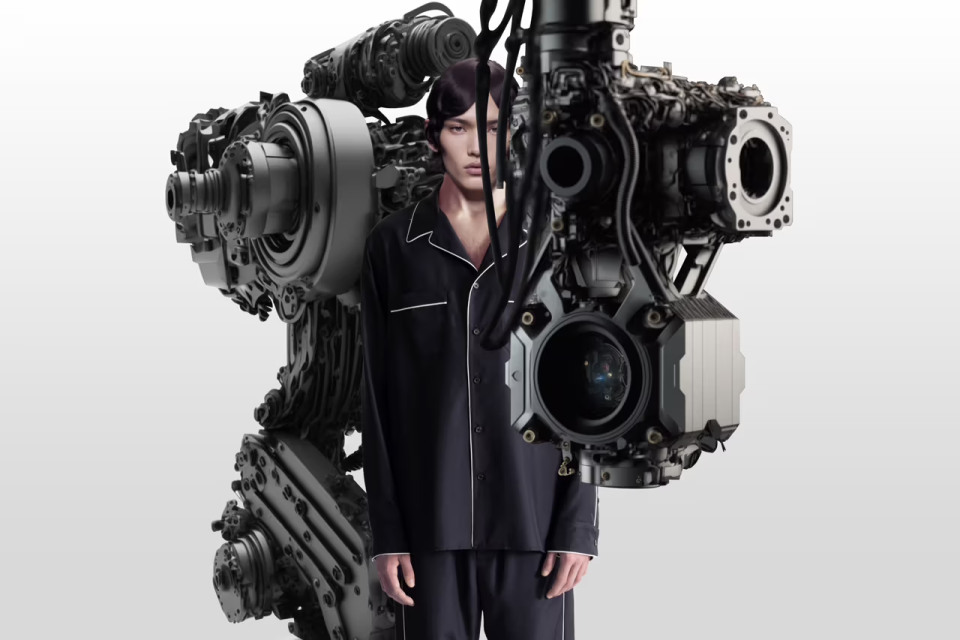
Valentino x AI
As the world’s fascination with ChatGPT was still climbing, Valentino flexed its AI muscle early with a new campaign for Maison Valentino Essentials in January. Thematically, the imagery showcased the interplay of human and machine, befitting a collection of select pieces that “express modernity, unconventionality and individuality.” The ads worked on a literal level as well: During a time when many fashion brands had yet to wrap their minds around the term “generative AI,” Italian AI expert Vittorio Maria dal Maso was using text prompts to create all of the visuals in the Essentials campaign. In February, Moncler and Maison Meta followed suit with another AI-generated campaign, seemingly cementing the technology’s use case in fashion marketing.
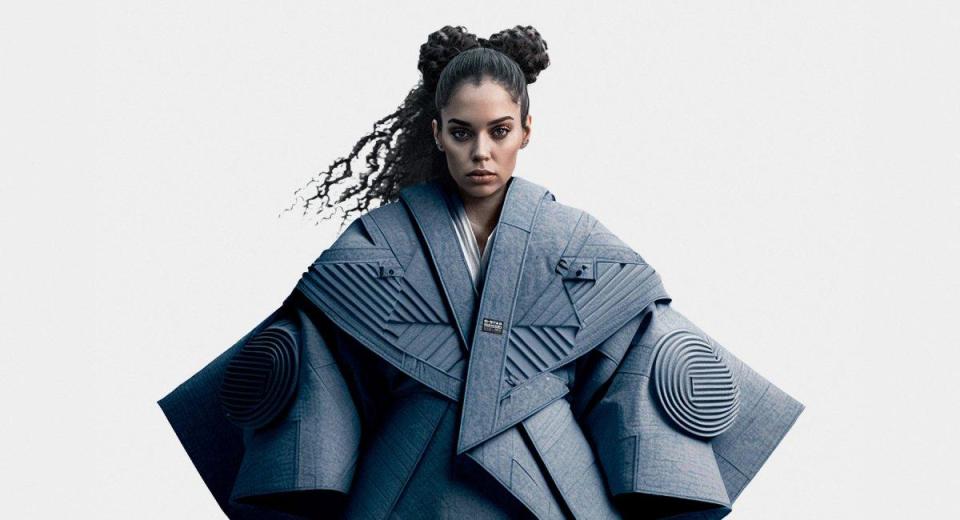
G-Star Raw’s AI Design Redefines Denim Couture
G-Star Raw reinterpreted denim couture with the debut of an AI-generated piece in March. The brand’s design tool of choice was Midjourney, an image-generation platform from San Francisco-based Leap Motion that became one of the leading platforms of its kind within less than a year of availability. What began as conceptual and experimental became real-world couture in the hands of the company’s in-house atelier in Amsterdam. The resulting denim cape was a fusion of tech and organic sensibilities — which made sense, considering the prompts: “denim cape morphic, model is wearing, organic shapes, minimal, ratio, futuristic hardware, techwear fashion, white background, 4k.”
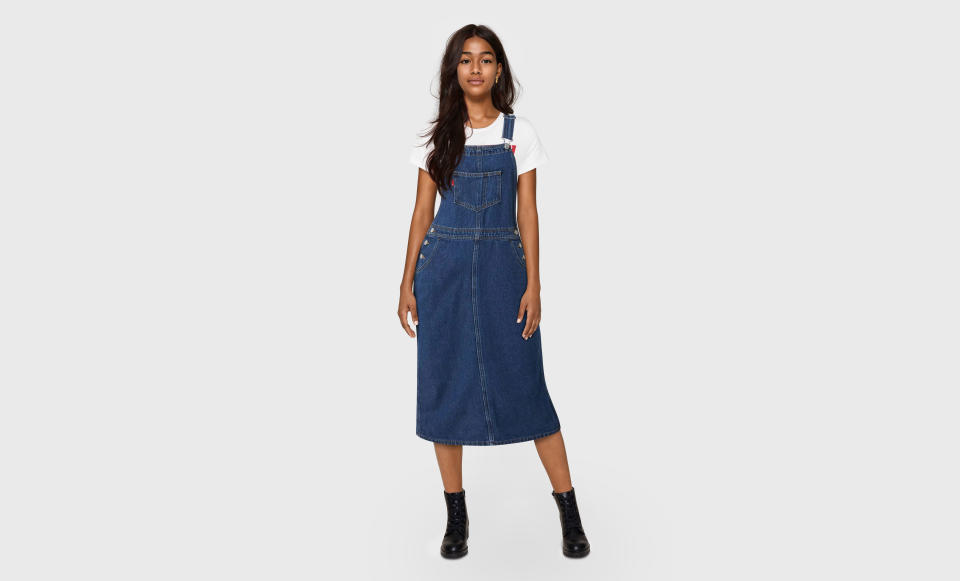
Levi’s Offers Cautionary Tale for AI in Marketing, Diversity
The diversity campaign unveiled by Levi’s in March probably sounded like a great idea, at least initially. But intense backlash to the plan — a pilot to feature a broad range of AI-created fashion models in advertising — appeared to catch the brand off guard. Social media reactions were fast and literally furious, as people wondered aloud why the jeans giant would use fake people to show diversity, instead of hiring real Black and brown human beings. Levi’s explained that this initiative doesn’t replace actions to support diversity, but the situation became a cautionary tale for brands nonetheless. It reinforced the need to carefully consider the use of AI, especially in light of any human cost.

AI Fashion Week Arrives
Top 10 Stories of 2023 |
|---|
Entertainment and Fashion Converge |
In April, AI cemented its mark on fashion when the tech got its very own fashion week. The two-day event was founded by generative AI creative agency Maison.Meta and held in Manhattan’s Spring Studios, a key venue during New York’s official fashion week. AI Fashion Week offered a showcase of machine-made designs, as well as a competition and panel talks.
While designers like self-described “AI fashion pioneer” Anna Leighton, aka Annatarian (see pictured, from her collection), showed what they could do, they weren’t the only ones on hand. Adidas left its imprimatur on the event by sending global vice president and general manager Erika Wykes-Sneyd of its 3 Stripes Studio to judge the contest, joining Revolve chief executive officer and cofounder Michael Mente, Celine casting director Natalie Hazzout and other established fashion industry figures. A key requirement was that the designs had to be realistically viable for actual production. AIFW went so well that it merited a second season in November, held in Milan.
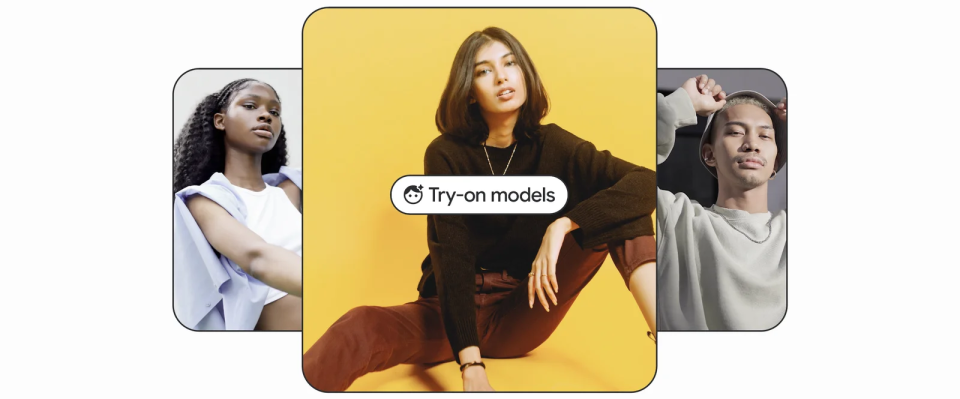
Google Moves Into AI Apparel Try-on
Big tech showed off big fashion ambitions in June, when Google suddenly unveiled apparel try-ons powered by AI. The update, which places AI garments on human models in various poses, surprised some people, but it’s a natural extension of the company’s work on digital fabric rendering, which has been an internal priority for years. Sources inside the company told WWD that it already made impressive gains years ago, long before the latest AI arrived. But with newer tools, Google’s fast-growing Shopping Graph and some key technical breakthroughs, the results took a leap forward — large enough that the search giant put the feature in the search engine’s product viewer, instead of the Google Shopping page. Everlane, H&M, Loft and Anthropologie were among the first brands to sign on.
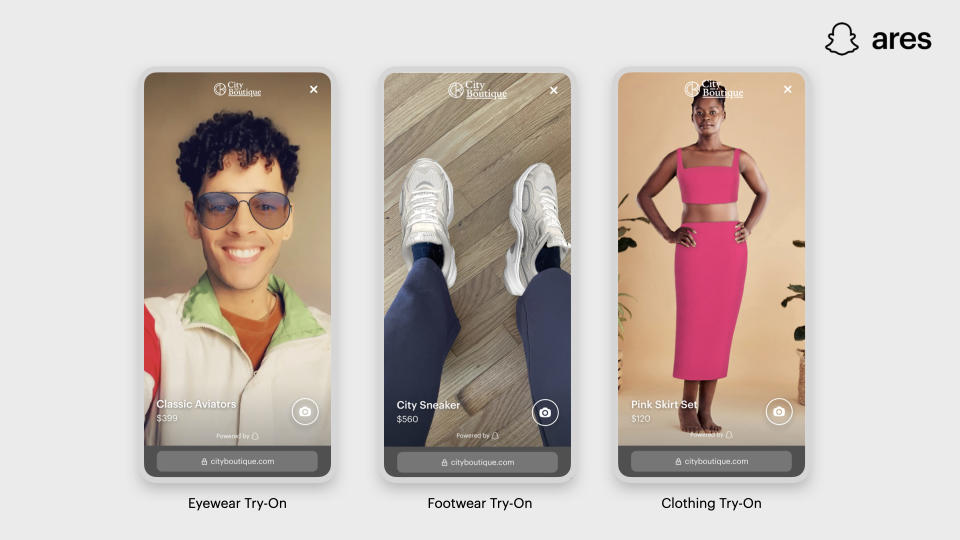
AI Sinks Snapchat’s Enterprise AR Business
Machines capable of thinking, learning and creating have had a rapid ascent, both on their own and in how they can shape other technologies, from the metaverse to augmented reality. Snap Inc. knows that all too well, which is why the Snapchat company launched and then closed its Augmented Reality Enterprise Services arm within six months. The division saw AI’s hyper-acceleration of AR as an opportunity and eyed business demand for those use cases. But eventually it saw AI as a double-edged sword: Anyone could use the tools to build AR experiences, and Snap couldn’t afford to fend off the heightening competition.
In a letter, Evan Spiegel, Snap’s chief executive officer, told employees “it would take significant incremental investment to grow our enterprise offering for retailers and we simply cannot make that investment at this time.” It was a painful decision, one that others may have to face in the AI era, but it may have helped the company pull off a pleasant surprise for investors. Snap managed to grow revenue 5 percent in the third quarter and add to its daily user base — despite negative PR over one of its latest features. Apparently AI dinged the platform again, as the ChatGPT-based bot, My AI, alarmed users with wayward postings without their knowledge.
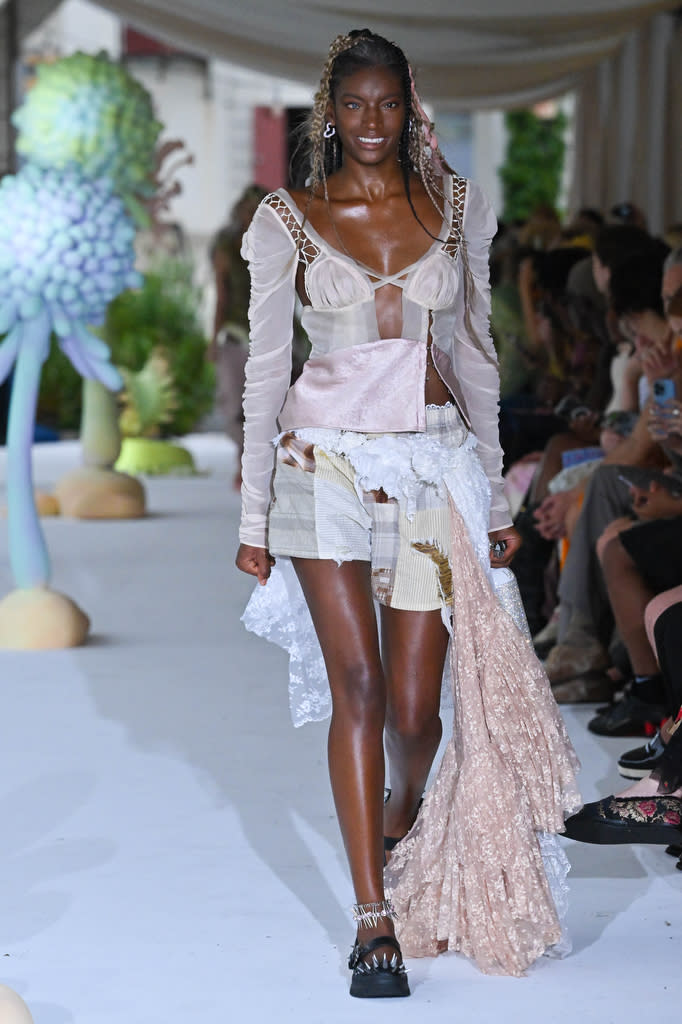
AI Designs Debut at NYFW via Collina Strada
Collina Strada, the countercultural label known for sustainability, was hailed as the first designer brand to openly adopt AI for the design process, as its spring 2024 line landed on the New York Fashion Week runway in September. But, of course, there’s a twist: As companies and designers get increasingly creative in their use of prompts for generative AI in the hopes of spinning brand-new looks, the New York brand looked to its previous works to inform its latest collection.
The company reportedly fed its 15-year fashion archive as training data for its AI model, honed the results manually — read: with human effort — then put those through the system, repeating the process in a cyclical manner until designers were confident that the AI “got” their style. The tangible results hit the show in the form of a tie-dye suit, shorts featuring a skirt flourish on one hip, lace knockouts, a camisole that transitioned into a minidress and a silk suit decked with tulle.
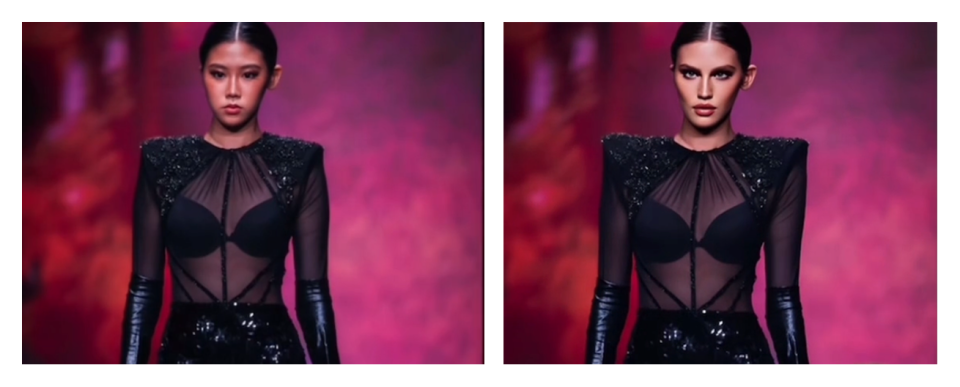
AI and Diversity, Part 2: Asian Model Said AI Photo Made Her Look White
In a viral TikTok post in October, Taiwanese-American fashion model Shereen Wu blasted designer Michael Costello for an altered runway photo that he shared on Instagram that changed her face to look white. “Editing my face and removing my race is completely disrespectful,” she said in the video.
Costello denied that, stating that it was fan art, but acknowledged that he “didn’t think” before sharing it. Wu didn’t buy the explanation: “They remove my image without an apology, then post AI art and then share profiles of AI models, as if to imply that everyone’s doing this, so I shouldn’t be angry — or I am replaceable,” she said.
Costello threatened to sue Wu over her Tiktok. Across the original share (now deleted), follow-up response and Wu’s reaction, the matter stretched across two platforms and potentially reached upwars of 3.5 million people, plus others, as it made the headlines.
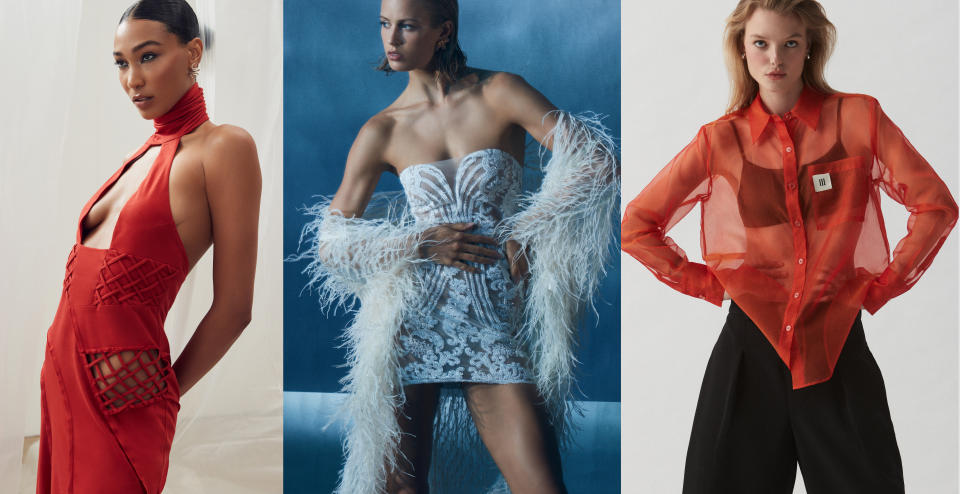
Revolve Carries AI-created Clothing
Revolve’s participation was key to AI Fashion Week, but it didn’t end in April with the event. That was just one part of the fashion retailer’s partnership with AIFW’s founder Maison.Meta. The other part involved a commitment to produce and sell AI-generated looks from the top-ranking designers in the competition. The arrangement bore fruit in November, when apparel from Paatiff, the winner, and runners-up Molnm and Opé dropped on the shopping site.
That wasn’t the first time machine-made designs became garments that people could actually buy. (Back in 2019, Glitch sold a Little Black Dress revamped by computer scientists using generative adversarial networks, a predecessor of today’s generative AI.)
But the Revolve-Maison.Meta deal is on a different level, putting AI fashion on a large stage via a shopping platform that has more than $1 billion in sales annually. It certainly looked like a watershed moment for the fashion tech, which finally appears to be graduating from experiment to legitimate business initiative. Whether that’s actually true will likely hinge on sales and other metrics, but the announcement made waves in the fashion sector, just as executives were getting ready to weigh their 2024 budgets.
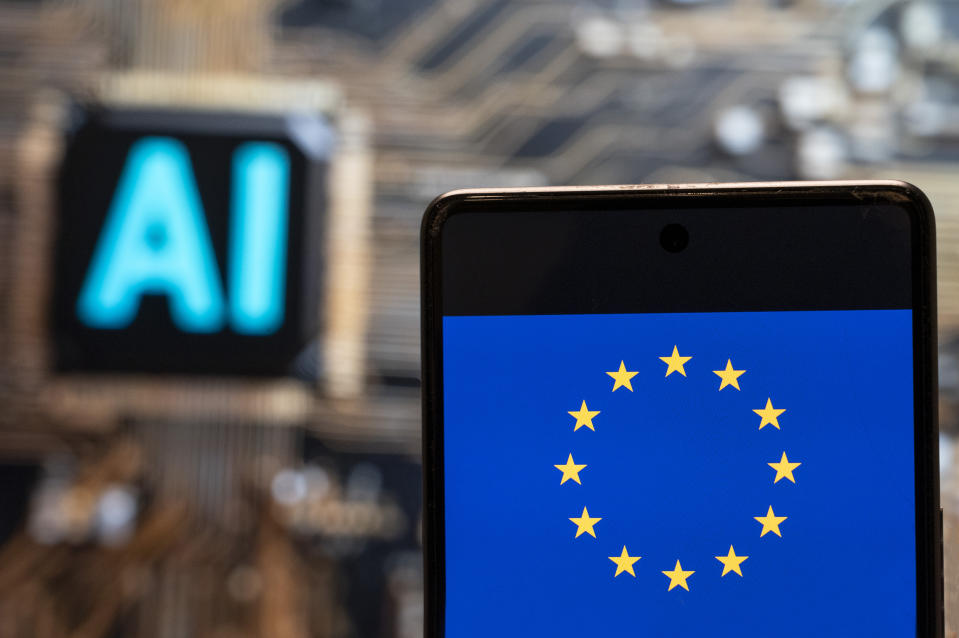
EU Imposes Limits on AI
In December, the European Union passed a law called the AI Act to regulate the technology and impose limits on its use. Its requirements and enforcement guidelines are muddy and probably will remain so for at least a few years. But the ambitious legislation may have consequences for a broad range of sectors, including fashion — particularly at the upper echelon since many of the top design houses are based in Paris, London, Milan and other points on the continent. By the time it takes effect, the law could be very far-reaching, as the technology continues to evolve and businesses race to embrace it across their organizations.
AI.Fashion’s Citron doesn’t see this as bad news. In fact, he considers it to be “an important step as we continue to figure out how to not just implement AI within the fashion industry, but how to do so responsibly,” he said. “[Next year] will be an unprecedented year of innovation for the industry, and one that starts with building tools that enhance human creativity, not replace it.”
Best of WWD

